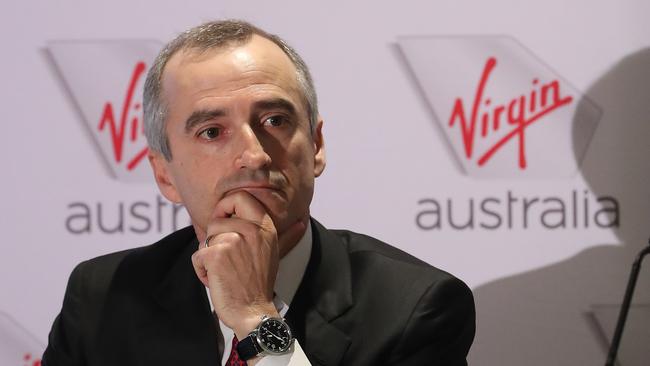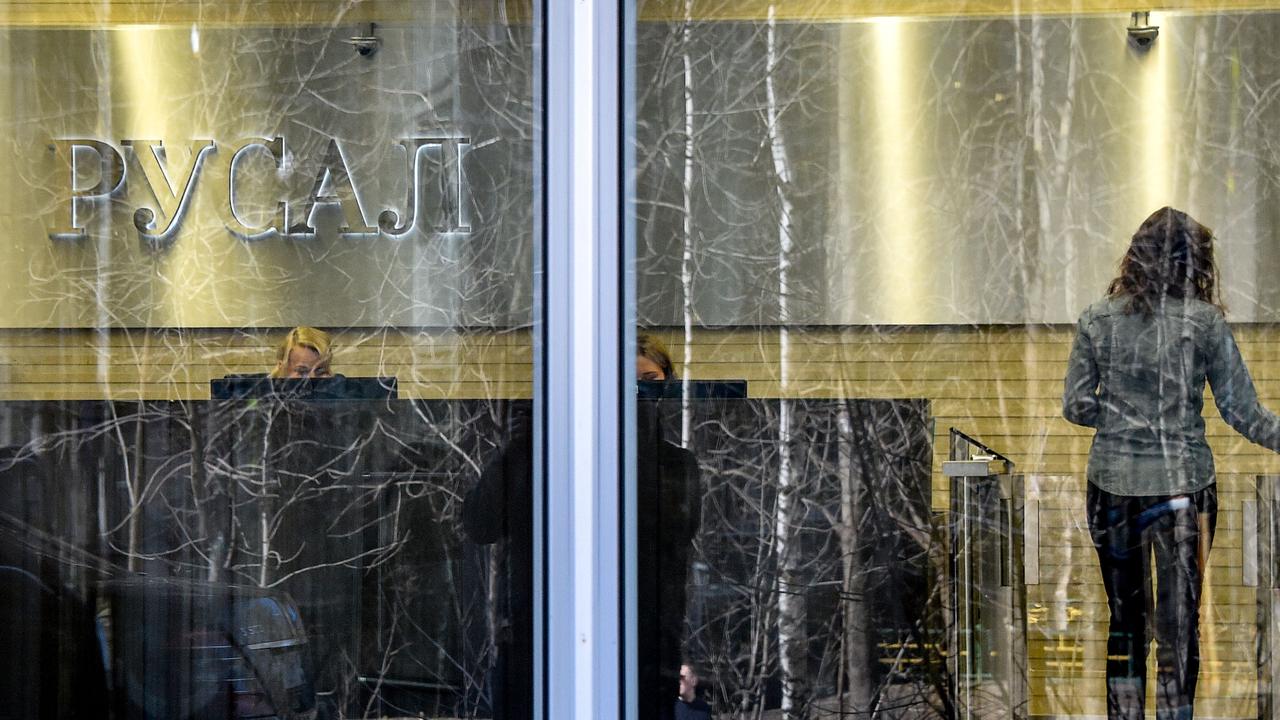Virgin in steep descent as demand slowdown drags on earnings
While the decline in Virgin’s profit over the first half isn’t a surprise, the extent of the earnings slowdown is.

Virgin said today it had generated an underlying pre-tax profit of $45.9 million in the December quarter, which is a significant improvement on the $3.6m loss it reported for the first quarter.
In the corresponding half of the previous financial year, however, Virgin had underlying pre-tax earnings of $85.1m. The $42.3m total for the first six months of this financial year is therefore $42.8m, or just over 50 per cent, less than it earned in the same half of 2015-16.
Its statutory after-tax result for the second quarter of $13.1m includes the ongoing restructuring charges (excluded from the underlying version of earnings that Virgin uses) incurred as a result of the three-year restructuring program Virgin initiated last year that targets $300m of cash cost savings by the end of 2018-19.
That Virgin has experienced materially reduced profitability so far this financial year isn’t a surprise, although the extent of the decline might be.
Both Virgin and Qantas pointed to soft trading conditions, particularly in the domestic market, when they produced their first-quarter updates last year. Qantas foreshadowed a fall of up to 13 per cent in its first-half underlying earnings, from $921m to between $800m and $850m. It hasn’t changed that guidance.
Virgin didn’t break down the influences on its performance beyond the broad reference to “subdued trading conditions in the domestic market.” It also didn’t refer to the potentially adverse impact of the proposed BP acquisition of the Woolworths petrol retailing business, a key component of the Virgin Velocity loyalty program joint venture with Affinity Equity Partners.
The ongoing problems its Tiger brand is having with the Indonesian authorities — Tiger was forced to cancel flights to Bali again today — and the continuing tough conditions for the carriers’ resources industry-exposed businesses are overlaying a weakening of demand within the core domestic passenger operations for both major airline groups.
After the massive $1.1bn recapitalisation last year, Virgin is at least better placed to weather any further deterioration in the market and it will also have the benefit of a lower interest bill.
It said today it had reduced net debt by $936.3m from its December 2015 level, despite the negative impact of foreign exchange movements on US dollar-denominated debt. Financial leverage had improved from 5.7 times to 4.5 times over that period, the maturity pattern of its debt has been extended and Virgin now has a record cash balance of about $1.6bn.
A positive for both Virgin and Qantas is that the groups are maintaining good discipline on capacity, with Virgin flying 5 per cent fewer sectors in the Virgin domestic business in the sector quarter relative to the same period last financial year. The scars of the destructive capacity wars are still fresh enough for both groups to manage capacity in line with demand.
With the capital raising and the $159m placement to China’s HNA, which joined another Chinese company, Nanshan Group as well as the longer-standing strategic shareholders Singapore Airlines and Etihad Airways on the register, Virgin is well aware that it is under real pressure to lift its financial performance.
Over the long term, the relationship with the two Chinese groups could be a major positive for Virgin’s domestic volumes.
In the near term, the levers that it can control in the face of softer demand and rising fuel costs are capacity discipline and the restructuring program that is designed to produce a big structural lift in its cash flows.
This financial year was, after the latest shoring up of the Virgin balance sheet, supposed to be the one that started to show some of the upside from the massive investments in repositioning and upgrading the Virgin-branded product over the past six years. The external environment isn’t proving very helpful.
There has been considerable speculation that the strategic shareholders, who hold more than 90 per cent of the group’s capital, might take the company private and the ongoing issues with its profitability out of the limelight. The free float in Virgin’s shares could shrink further if the strategic shareholders exercise their ability to “creep” via on-market purchases.
Regardless, there is potential for another shake-up in the make-up of the register and the balance within Virgin’s boardroom because of the question mark over the strategies of its biggest shareholder, Etihad, which owns 21.8 per cent of Virgin’s shares.
The “transitioning” out of Etihad chief executive James Hogan, the architect of the “virtual network” strategies behind its dramatic growth, and its plans to “adjust” Etihad’s equity partnerships approach (that supported those strategies), will generate uncertainty for an Etihad investment that generates no particular benefit to it relative to the other strategic shareholders that couldn’t be secured via more conventional aviation industry commercial relationships.







Virgin Australia may have reported relatively solid underlying profitability for the second quarter but its trading update reflects a significant slowdown in demand and earnings in the first six months of the year.